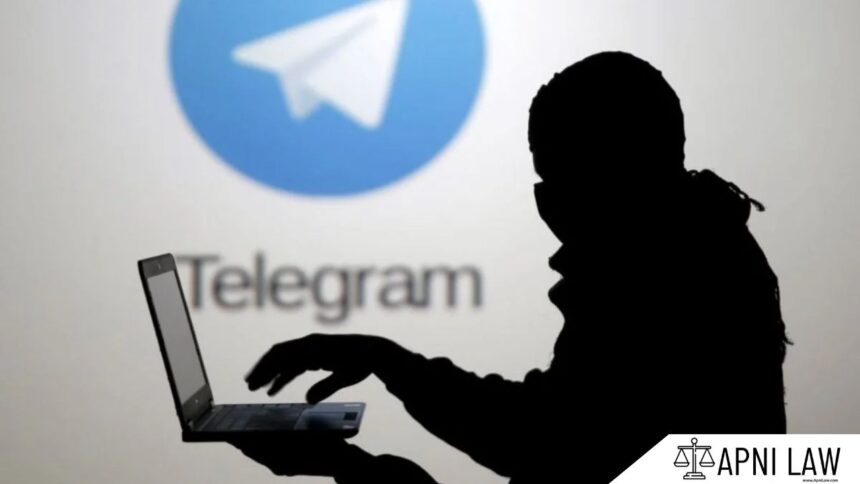What Does Section 67B of the IT Act State?
Section 67B of the Information Technology Act, 2000 provides:
“Whoever—
(a) publishes or transmits or causes to be published or transmitted material in any electronic form which depicts children engaged in sexually explicit act or conduct; or
(b) creates text or digital images, collects, seeks, browses, downloads, advertises, promotes, exchanges or distributes material in any electronic form depicting children in obscene or indecent or sexually explicit manner; or
(c) cultivates, entices or induces children to online relationship with one or more children for and on sexually explicit act or in a manner that may offend a reasonable adult on the computer resource; or
(d) facilitates abusing children online; or
(e) records in any electronic form own abuse or that of others pertaining to sexually explicit act with children,
shall be punished on first conviction with imprisonment of either description for a term which may extend to five years and with fine which may extend to ten lakh rupees, and in the event of second or subsequent conviction with imprisonment of either description for a term which may extend to seven years and also with fine which may extend to ten lakh rupees.”
This provision directly criminalises any involvement with child sexual abuse material (CSAM), whether through publishing, transmitting, browsing, or even possessing such material.
How Did the Supreme Court Clarify Section 67B in 2024–2025?
In September 2024, the Supreme Court delivered a landmark ruling that shaped the interpretation of Section 67B. The Court held that downloading and storing CSAM is itself an offence. Transmission or publication is not necessary to establish liability. This judgment overturned a High Court decision that had wrongly restricted Section 67B only to cases of active transmission.
The Court stressed that possession of child pornography creates liability when the accused fails to delete or report the material. It also invoked the presumption of culpable mental state under the POCSO Act. This means once the prosecution proves possession, the burden shifts to the accused to show lack of intent.
The Court’s reasoning marked a strict stance. It aligned Section 67B with child protection objectives, confirming that the law punishes not only sharing but also silent storage or collection of CSAM.
Why Did the Court Expand Liability Beyond Transmission?
The Court expanded liability because it recognised the grave harm caused by mere possession of CSAM. In its reasoning, the Court stated that when individuals store or keep such material, they indirectly encourage demand and perpetuate exploitation. Even if no transmission occurs, holding such content sustains the chain of abuse.
Therefore, Section 67B covers browsing, downloading, and storing. The Court clarified that intent to share is not always required. Failure to delete or act upon discovery indicates culpability. This interpretation harmonises Section 67B with Section 15 of the POCSO Act, which punishes storage and viewing of child pornography.
How Have High Courts Interpreted Accidental Downloads?
While the Supreme Court adopted a strict approach, High Courts also carved out safeguards for individuals caught in accidental possession. The Kerala High Court in 2024 and 2025 ruled that automatic or unintentional downloading does not establish an offence. If files appear on a device without the user’s knowledge or intent, liability under Section 67B cannot be imposed.
The Court analysed intent as a crucial element. It noted that technical glitches, auto-downloads, or unknowing presence of files cannot amount to culpability. In such cases, the absence of deliberate storage or browsing prevents conviction.
This interpretation prevents misuse of Section 67B against innocent users. It strikes a balance between strict enforcement and fair protection of digital rights.
What Did Trial Courts Rule on Large Collections of CSAM?
In June 2025, a Delhi trial court delivered a strong verdict under Section 67B. It convicted an accused who had stored 183 files of CSAM. The Court held that sheer possession of such a large volume of material demonstrated active engagement.
The judgment clarified that Section 67B(b) covers collecting or possessing CSAM, regardless of whether transmission was proven. The Court stated that the scale of storage itself was evidence of intent and culpability. This reinforced the principle that accumulation of CSAM cannot be excused under technical or accidental download arguments.
The ruling highlighted the judiciary’s zero-tolerance approach to child pornography and set a precedent for trial courts in similar cases.
What Legal Principles Have Emerged from Recent Judgments?
Recent rulings established several important principles. First, possession alone is sufficient to attract liability when the accused cannot prove lack of intent. Second, the act of downloading, browsing, or storing falls within Section 67B. Third, the presumption of culpable mental state under POCSO strengthens prosecution cases.
At the same time, courts emphasised safeguards. Accidental or automatic downloads without awareness do not establish guilt. Defendants may rely on proof of lack of intent, technical malfunction, or prompt deletion to escape liability.
These principles show that Section 67B operates broadly but also demands careful judicial scrutiny of facts and intent.
How Do Section 67B and POCSO Act Work Together?
Courts frequently read Section 67B of the IT Act alongside Section 15 of the POCSO Act. Both provisions aim to curb child sexual exploitation online. Section 67B criminalises a wide range of online activities involving CSAM, while Section 15 focuses on storage, browsing, and viewing.
The Supreme Court in 2024 explicitly applied the presumption of culpable mental state from the POCSO Act. This alignment ensures stricter liability and shifts the evidentiary burden on the accused once possession is proven. Together, these provisions build a comprehensive legal shield for protecting children in cyberspace.
Why Does Intent Matter Under Section 67B?
Intent remains central to differentiating culpable acts from innocent incidents. Courts clarified that deliberate downloading, browsing, or storing of CSAM attracts liability. However, when files appear unintentionally, or without the user’s knowledge, the courts avoid criminalising such possession.
This balance preserves fairness. The law cannot punish individuals for actions beyond their control. But once intent is shown or presumed, liability becomes unavoidable. Thus, courts carefully examine facts such as deletion attempts, reporting behaviour, and technical evidence of active searching.
What Do These Judgments Reveal About India’s Approach to CSAM?
These judgments reveal a strong and evolving judicial stance. The Supreme Court has moved towards strict liability for possession, recognising the global harm of child pornography. High Courts, however, guard against misuse by demanding proof of intent where downloads occur accidentally. Trial courts apply the law firmly when evidence shows deliberate storage or collection.
The combined effect shows that Indian courts prioritise child protection while also ensuring due process. The balance of strict enforcement and careful evaluation of intent reflects a nuanced approach to cybercrime involving children.
For any specific query call at +91 – 8569843472
Conclusion
Section 67B of the IT Act plays a vital role in combating child pornography. Recent judgments in 2024 and 2025 underline that possession, browsing, and downloading attract liability. The Supreme Court confirmed that mere storage constitutes an offence, while High Courts ensured that accidental downloads without intent do not lead to punishment. Trial courts reinforced strict liability where large collections were discovered.
Together, these rulings establish that Indian law takes a zero-tolerance stance against child sexual abuse material. They also show that courts will not allow technical defences to shield offenders, while still protecting innocent individuals from wrongful prosecution. Section 67B continues to serve as a cornerstone in India’s cyber law framework, securing children from exploitation in the digital age.








